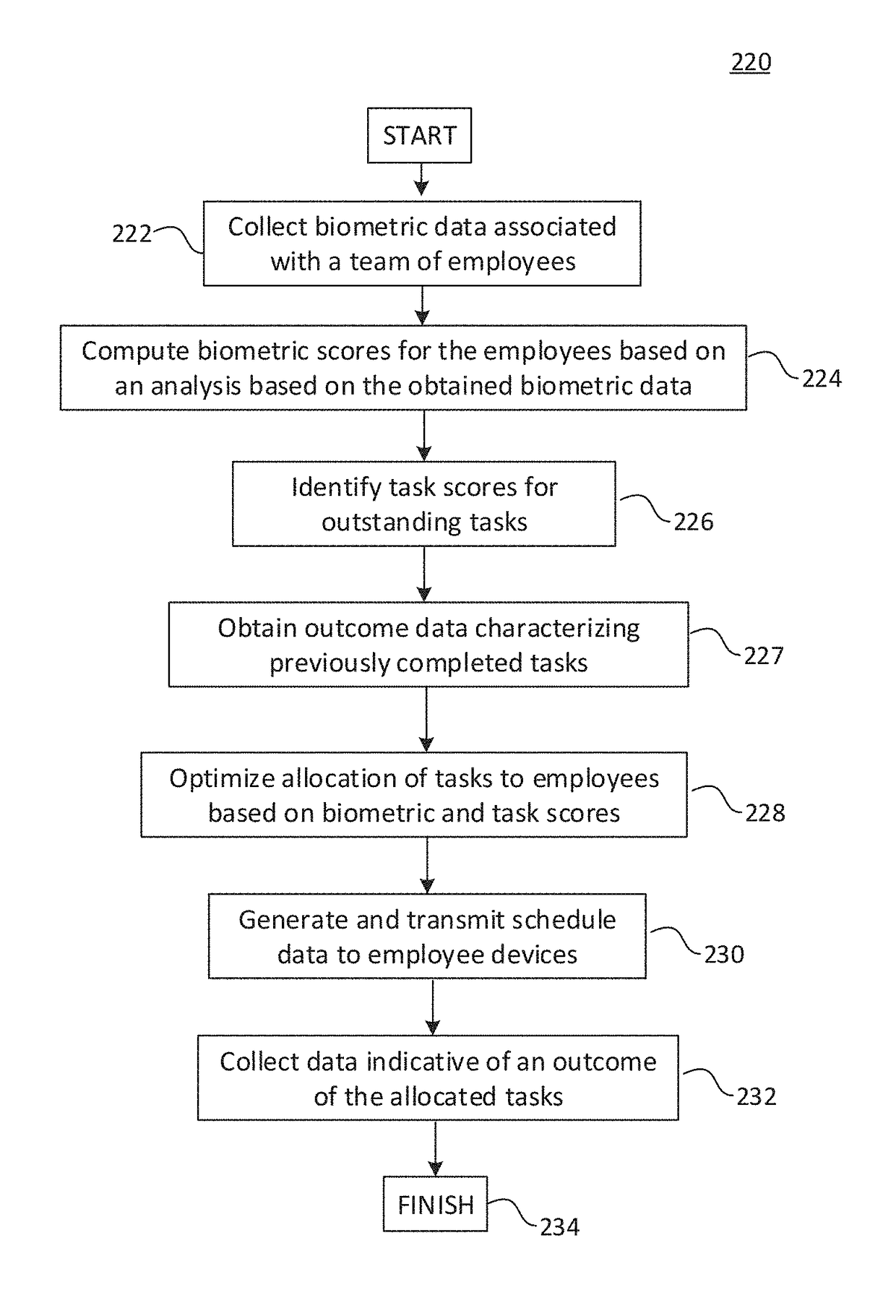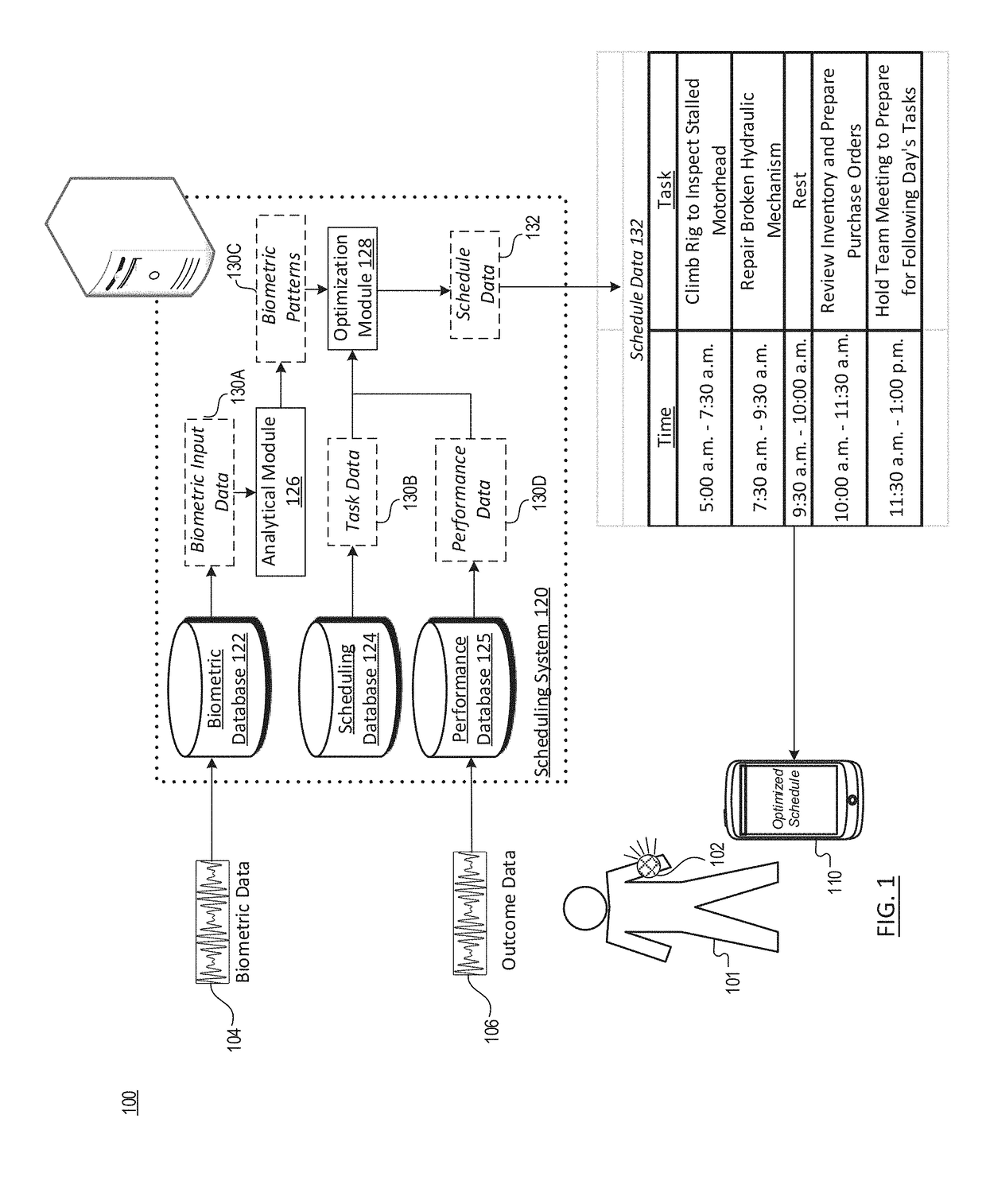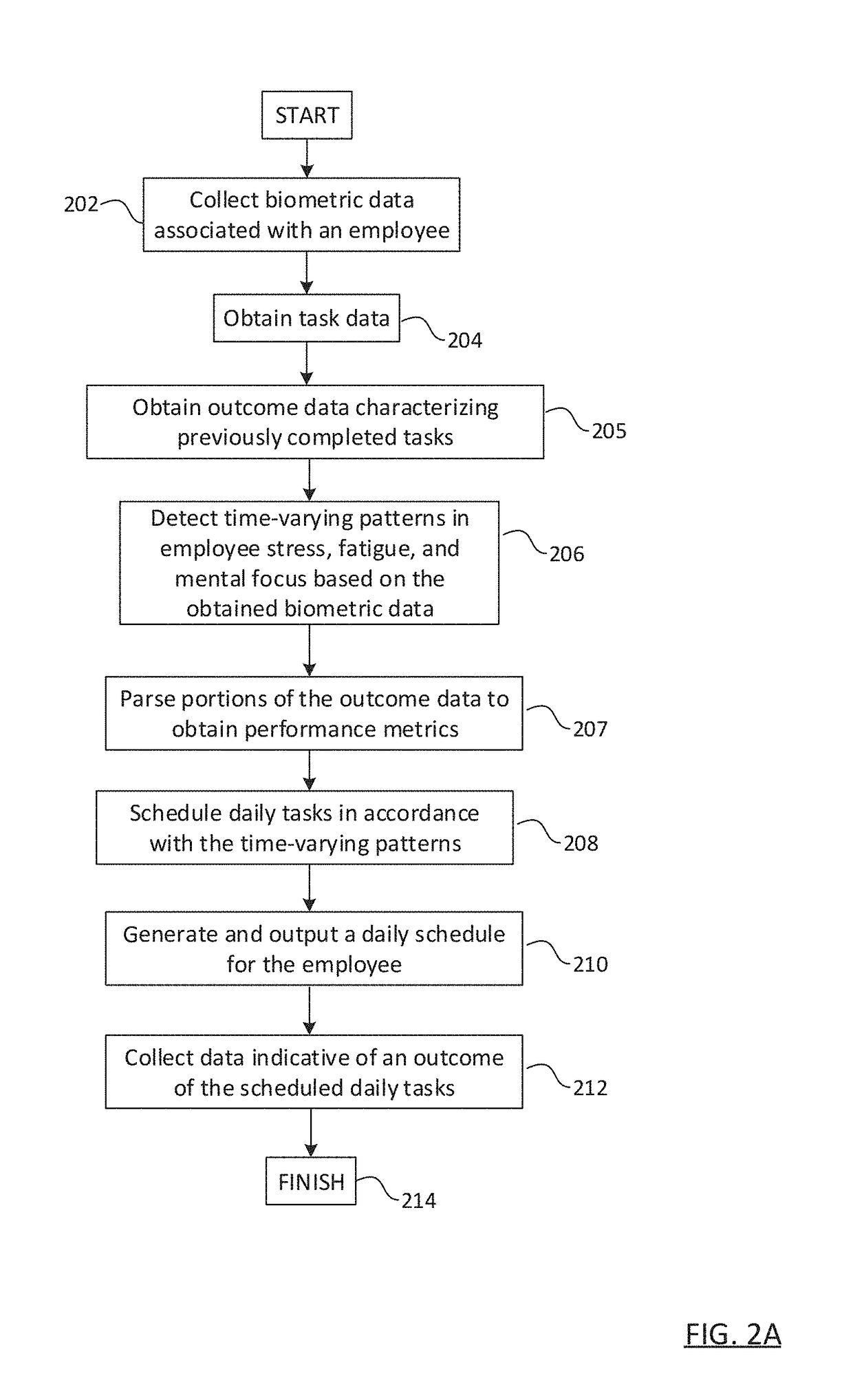Biometric-based resource allocation
a biometric and resource technology, applied in the field of enterprise resource management, can solve the problems of corresponding complexity and risk of employee injury in each of the outstanding tasks, and achieve the effect of reducing the risk of employee injury
- Summary
- Abstract
- Description
- Claims
- Application Information
AI Technical Summary
Benefits of technology
Problems solved by technology
Method used
Image
Examples
Embodiment Construction
[0025]This specification describes a system that allocates outstanding tasks within an enterprise to one or more employees based on collected biometric data that characterizes not only the employees' current physiological state, but temporal variations in the physiological characteristics of the employees throughout prior workdays. By way of example, the enterprise may include any of a number of business, governmental, or regulatory entities, which may employ many hundreds or thousands of individuals in various positions. Although the employees' duties often vary based on their position within the enterprise, the tasks assigned to these employees generally include subsets of mundane tasks (or tasks delivering little value) requiring minimal physical or mental exertion, and subsets of high value, complicated, or dangerous tasks requiring significant physical exertion and mental focus to ensure a successful and safe completion.
[0026]The system may, in some instances, generate metrics,...
PUM
 Login to View More
Login to View More Abstract
Description
Claims
Application Information
 Login to View More
Login to View More - R&D
- Intellectual Property
- Life Sciences
- Materials
- Tech Scout
- Unparalleled Data Quality
- Higher Quality Content
- 60% Fewer Hallucinations
Browse by: Latest US Patents, China's latest patents, Technical Efficacy Thesaurus, Application Domain, Technology Topic, Popular Technical Reports.
© 2025 PatSnap. All rights reserved.Legal|Privacy policy|Modern Slavery Act Transparency Statement|Sitemap|About US| Contact US: help@patsnap.com



